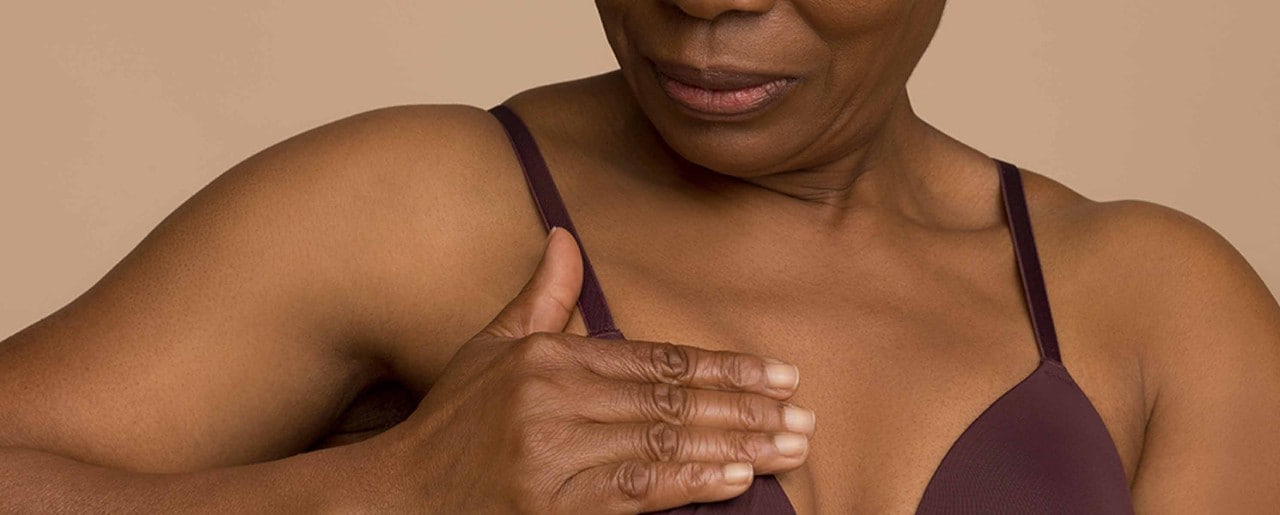Health
Where are breast cancer lumps usually found?
By Nancy Kupka, PhD, RN Nov 19, 2022 • 6 min
Breast lumps can be found anywhere in the breast or armpit. Most breast cancers originate in the milk ducts but can spread to the connective tissue elsewhere in the breast or lymph tissues in the armpit where breast lumps are then sometimes detected. In fact, breast cancer cells can spread anywhere in the body.
There is a 1 in 8 chance that a woman, and about a 1 in 833 chance that a man, will develop breast cancer in their lifetime. Although it is far less common in men, breast cancer is the second most common cancer in women in the U.S., with the most common being skin cancer. Each year, about 1 in 3 new female cancer cases is breast cancer.
What do breast cancer lumps feel like?
Normal breast tissue feels somewhat spongy. Generally, cancerous lumps tend to be firm, irregular and might be fixed in the breast tissue. Know that most breast lumps are not cancer and over 80% of them end up being harmless. However, if you feel a lump, or there is anything that feels different to you about your breast tissue, don’t just assume that it is nothing, even if you have routine mammograms. It is important to see your healthcare provider promptly so they can diagnose what that lump is.
Do breast cancer lumps hurt?
While cancerous breast lumps are typically painless, there is a small percentage of women that experience painful breast lumps that are found to be cancer. Most breast pain is related to the menstrual cycle, if you have one. For example, some benign (noncancerous) breast conditions, like fibrocystic changes, may become painful near the beginning of your menstrual cycle.
How are breast cancer lumps detected?
Breast cancer lumps are usually found during a mammogram, an X-ray screening test of the breasts. A mammogram can find breast cancer years before physical symptoms develop and when the cancer is more likely to be smaller and less likely to spread. Women who have regular mammograms are more likely to have breast cancer found in the early stages. This can result in better treatment options, less risk of needing a mastectomy (breast removal) or chemotherapy and better chances of curing the cancer. Although mammograms are not perfect and miss some cancers, they are an effective screening tool for breast cancer. In fact, mammograms are far better than breast self-exams and even external examinations by healthcare providers. If a worrisome breast lump is detected during a mammogram, a biopsy, a small procedure that obtains a tissue sample for viewing under a microscope, will be needed to confirm whether the lump is cancer.
When should you get screened for breast cancer?
It’s best to follow the American Cancer Society’s recommendations for breast cancer screening:
A woman is considered to be at average risk for breast cancer if she doesn’t have a personal history of breast cancer, a strong family history of breast cancer or a genetic mutation known to increase risk of breast cancer, such as the BRCA gene, and has not had chest radiation therapy before the age of 30.
Women at average risk between the ages of 40–44 years may choose to start getting mammogram screenings annually. However, by 45–54 years, women should be screened every year. Women 55 years and older can be screened every other year or continue yearly mammograms.
On the other hand, women who are at high risk for breast cancer should get a mammogram and a magnetic resonance imaging (MRI) scan of their breasts each year, beginning at age 30. Women at an increased risk for breast cancer include those who have:
- A lifetime risk of breast cancer of 20% to 25% or greater based on family history.
- A known BRCA1 or BRCA2 gene mutation, or a parent, brother, sister or child with a BRCA1 or BRCA2 gene mutation.
- Had radiation therapy to the chest when they were between the ages of 10–30 years old.
- Li-Fraumeni syndrome, Cowden syndrome or Bannayan-Riley-Ruvalcaba syndrome, or a parent, brother, sister or child with one of these syndromes.
Screening for breast cancer in men has not been studied to know if it is helpful, and mammography and ultrasounds are usually only done if a lump is found. Because men have very little breast tissue, it is easier for men and their healthcare providers to feel small masses during breast self-exams or clinical exams. However, men who have a strong family history of breast cancer or BRCA mutations should discuss how to manage their risk with their healthcare provider.
Whatever your risk level is, follow up with your healthcare provider as soon as something seems different in your breast. The earlier a mass is detected, the better the outcome.
Published January 2020. Clinically reviewed and updated by Rebeca Thomas, BSN, RN, CPHQ, November 2022.
Sources:
- https://www.cancer.org/content/dam/CRC/PDF/Public/8577.00.pdf
- https://www.cancer.org/content/dam/CRC/PDF/Public/8584.00.pdf
- https://blog.dana-farber.org/insight/2015/10/what-does-a-breast-cancer-lump-feel-like/
- https://www.mayoclinic.org/diseases-conditions/fibrocystic-breasts/symptoms-causes/
- https://www.cancer.org/content/dam/CRC/PDF/Public/8579.00.pdf
- https://www.cancer.gov/types/breast/hp/breast-screening-pdq
- http://www.cancer.org/cancer/breast-cancer-in-men/detection-diagnosis-staging/detection.html


